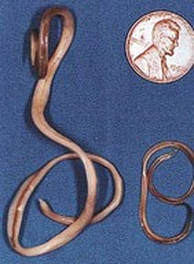Raccoons

Raccoons are the most common carrier of rabies in the United States.
According to the CDC, about 93 of every 100 reported cases of rabies are in wild animals. Raccoons are the most common wild animal with rabies.
Racoons are also the primary hosts of Baylisascaris Procyonis, a roundworm.

People become infected when they accidentally ingest infected eggs in soil, water, or on objects that have been contaminated with raccoon feces. Anyone who is exposed to environments where raccoons frequent is potentially at risk. Young children are at highest risk for infection as they may be more likely to put contaminated fingers, soil, or objects into their mouths. When humans ingest these eggs, they hatch into larvae in the person's intestine and travel throughout the body, affecting the organs and muscles. Depending on where the larvae migrate, Baylisascaris infection can affect the brain and spinal cord (neural larva migrans), the eye (ocular larva migraines), and/or other organs (visceral larva migrans). Signs and symptoms depend on how many eggs are ingested and where in the body the larvae travel. Symptoms of infection may take a week or so to develop and may include nausea, tiredness, liver enlargement loss of coordination, lack of attention to people and surroundings, loss of muscle control, blindness, coma, and in severe cases even death.
Back
Back